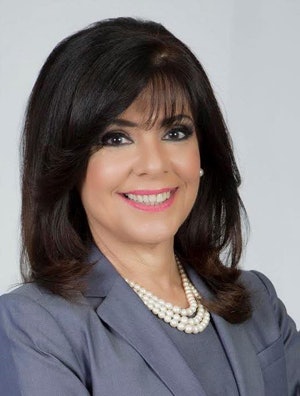Growing up in the Dominican Republic, Dr. Maria Harper-Marinick could scarcely have imagined that she would one day lead one of the largest community college systems in the United States. Currently, she is chancellor of the Maricopa Community College District, a system of 10 colleges in Arizona, serving approximately 200,000 students.
 Dr. Maria Harper-Marinick
Dr. Maria Harper-MarinickAfter completing her undergraduate degree in 1981 at the Universidad Nacional Pedro Henríquez Ureña, a private university in the Dominican Republic, Harper-Marinick received a Fulbright scholarship to pursue a master’s degree in education at Arizona State University.
Leaving her friends and family behind felt like a gamble at the time, Harper-Marinick recalls, but it has more than paid off. At ASU, she was introduced to the work that Maricopa and other community colleges were doing to provide open access to higher education to all students across the country.
“I was fascinated by the fact that there are open door institutions that do not turn anybody away and basically say, ‘If you want and are ready for an education and want a better life, come and we will help you achieve your goals,’” Harper-Marinick says.
She signed on to work at Maricopa in 1991 after completing her Ph.D. in educational technology at ASU and has not looked back since. Harper-Marinick invested her entire career in Maricopa, working her way up through the ranks to her current position as chancellor, officially stepping into the role in May 2016.
“I think of it as a gift,” she says. “When I get up in the morning and think of what I do every day, bringing [educational] opportunity to people, and that I have an opportunity to influence policy and to influence decisions that lead to those opportunities, I think it is a gift.”
For many students in Arizona, Maricopa is an affordable entry point to higher education. Through the Maricopa to ASU Pathways Program (MAPP), students can move seamlessly to four-year degree programs. Since its introduction in 2009, MAPP has benefited thousands of students.
“It’s a good example of what’s possible when institutions come together with common goals,” Harper-Marinick says.
Although she applauds Maricopa’s many successes, Harper-Marinick does not intend to allow the system to rest on its laurels.
Maricopa is currently in the midst of a reorganization, dubbed “The Transformation,” which is intended to enhance student success while better aligning Maricopa’s educational offerings with local workforce needs.
“To find a place where the mission seemed to be so aligned with who I am as a person and what I value and how I wanted to invest my talent, is the reason why I came to the system and is the reason why I’m still here,” Harper-Marinick says.
- This story also appears in the Sept. 21,2017 print edition of Diverse.





















